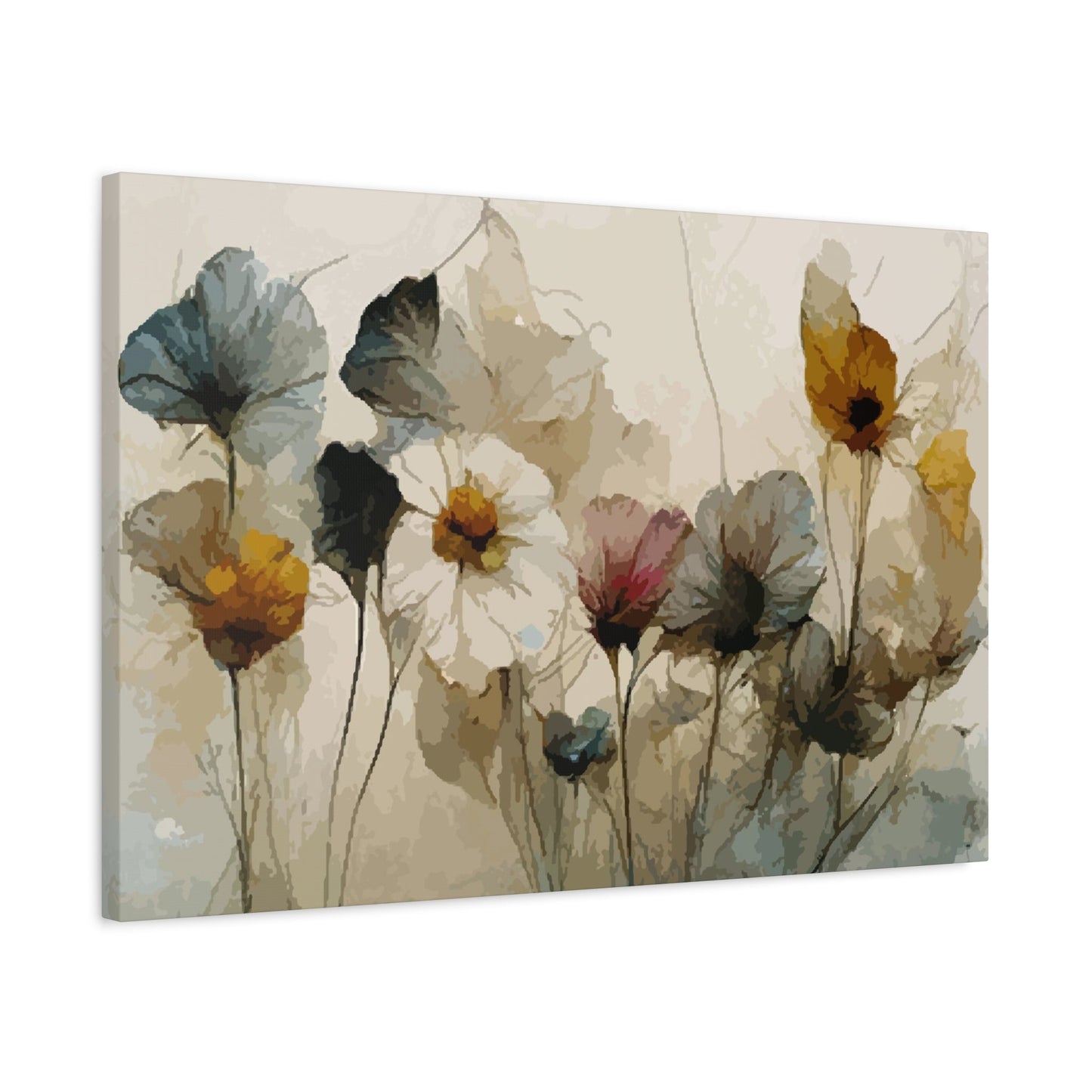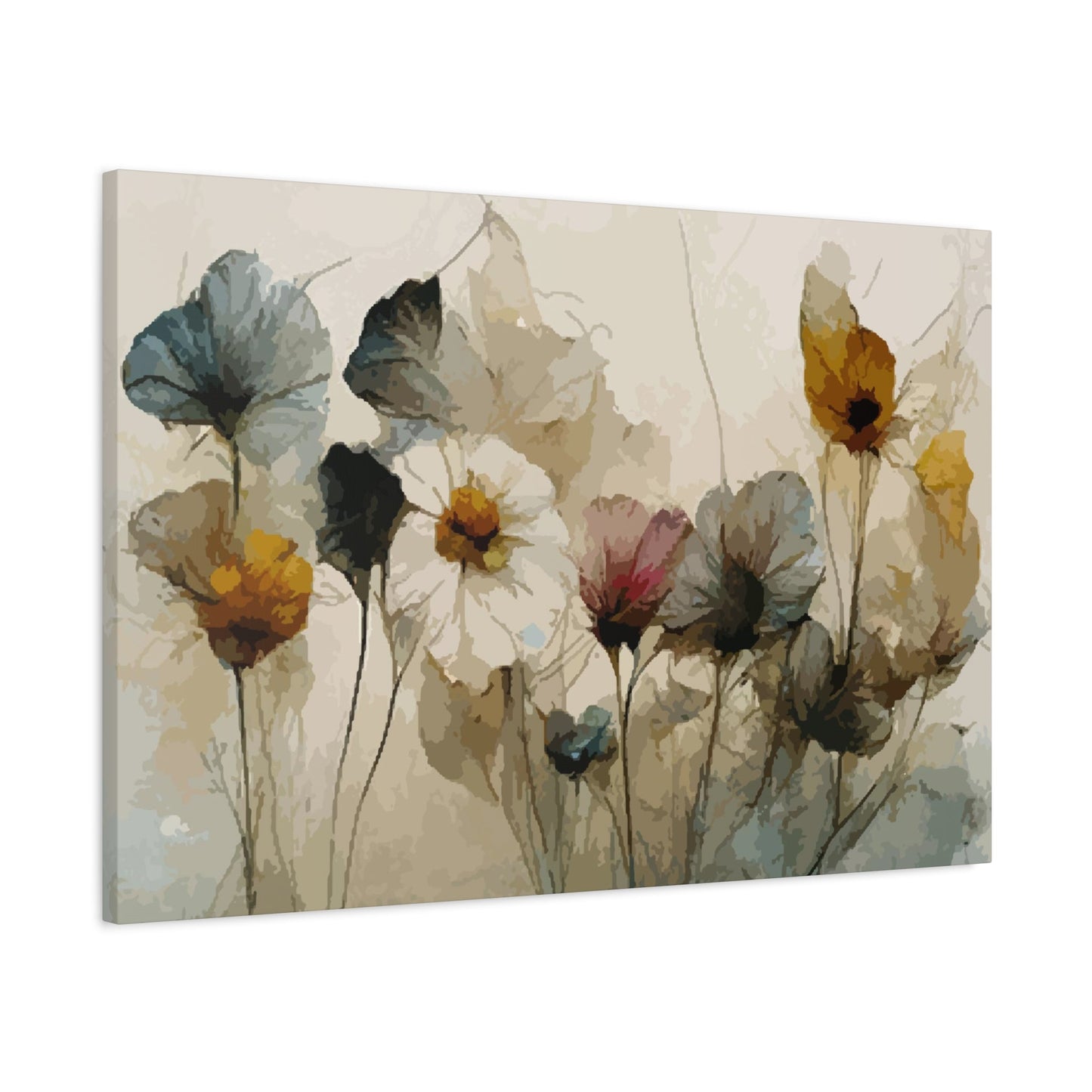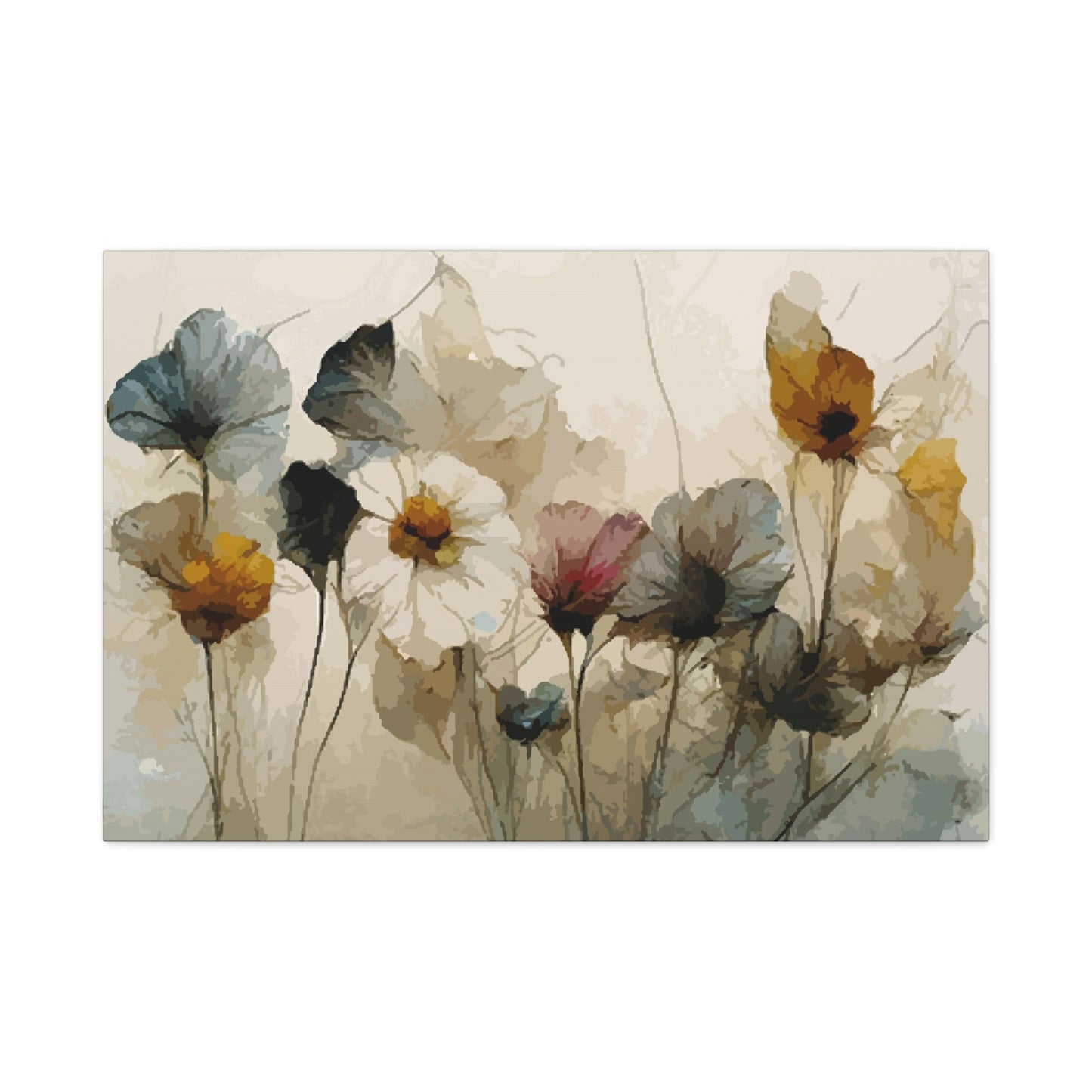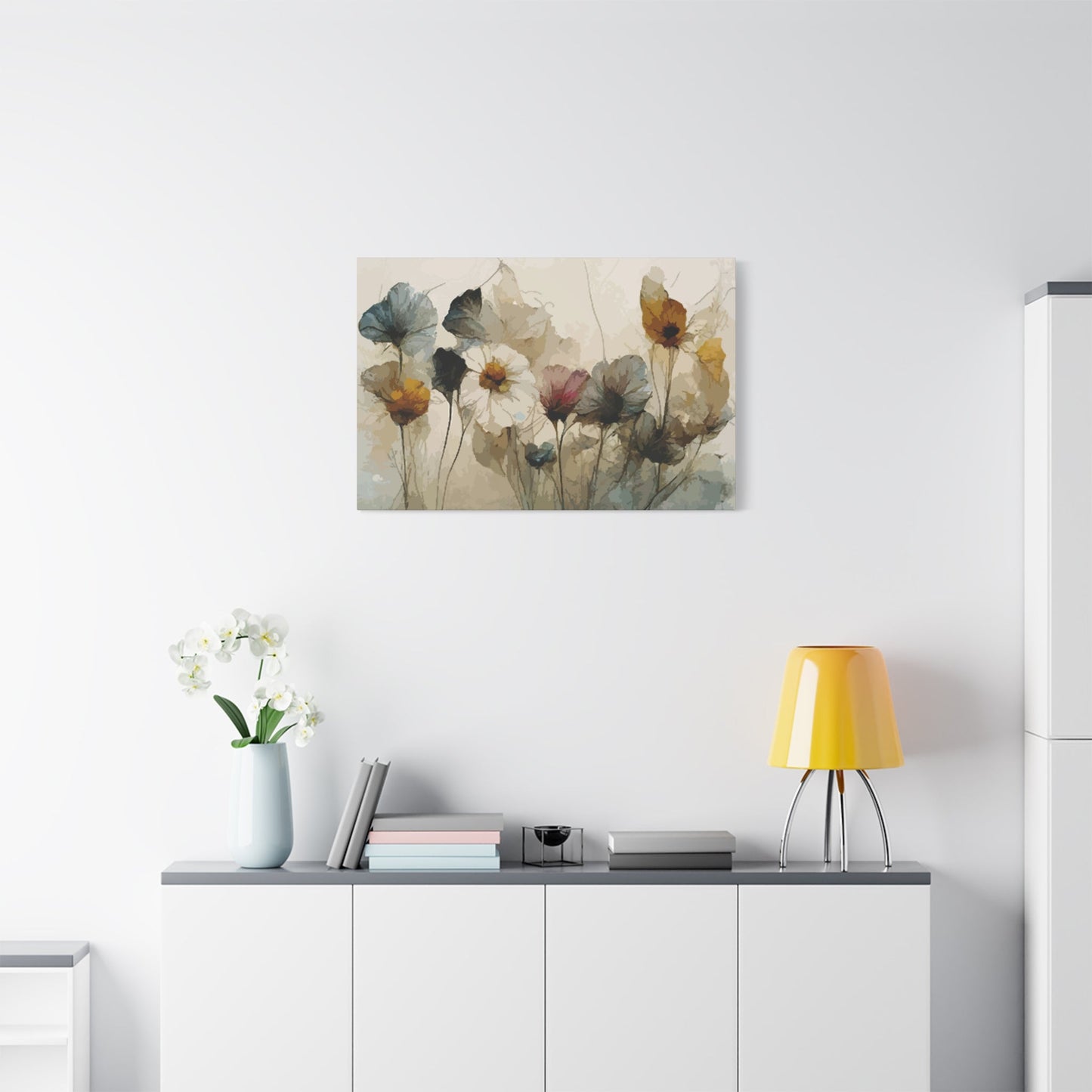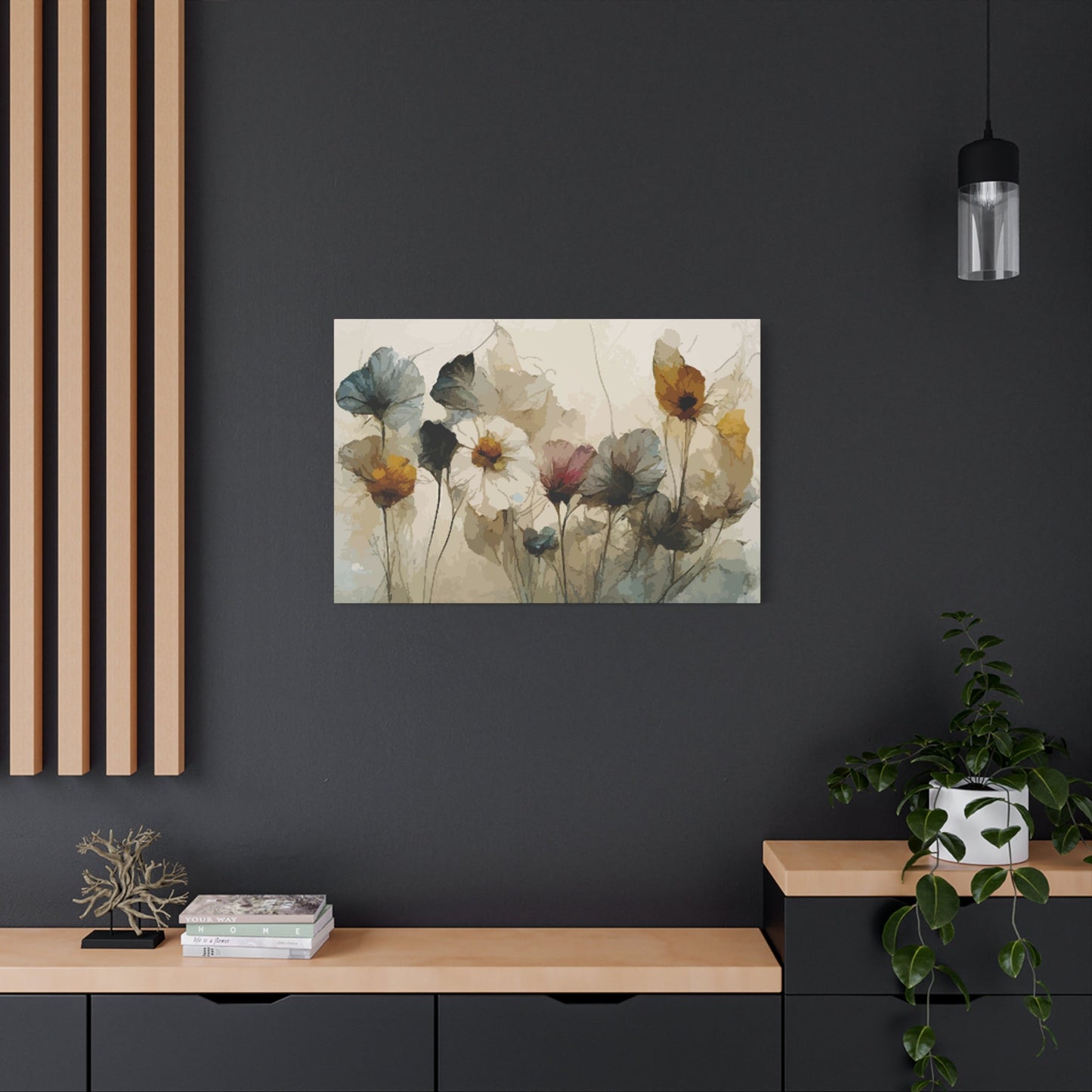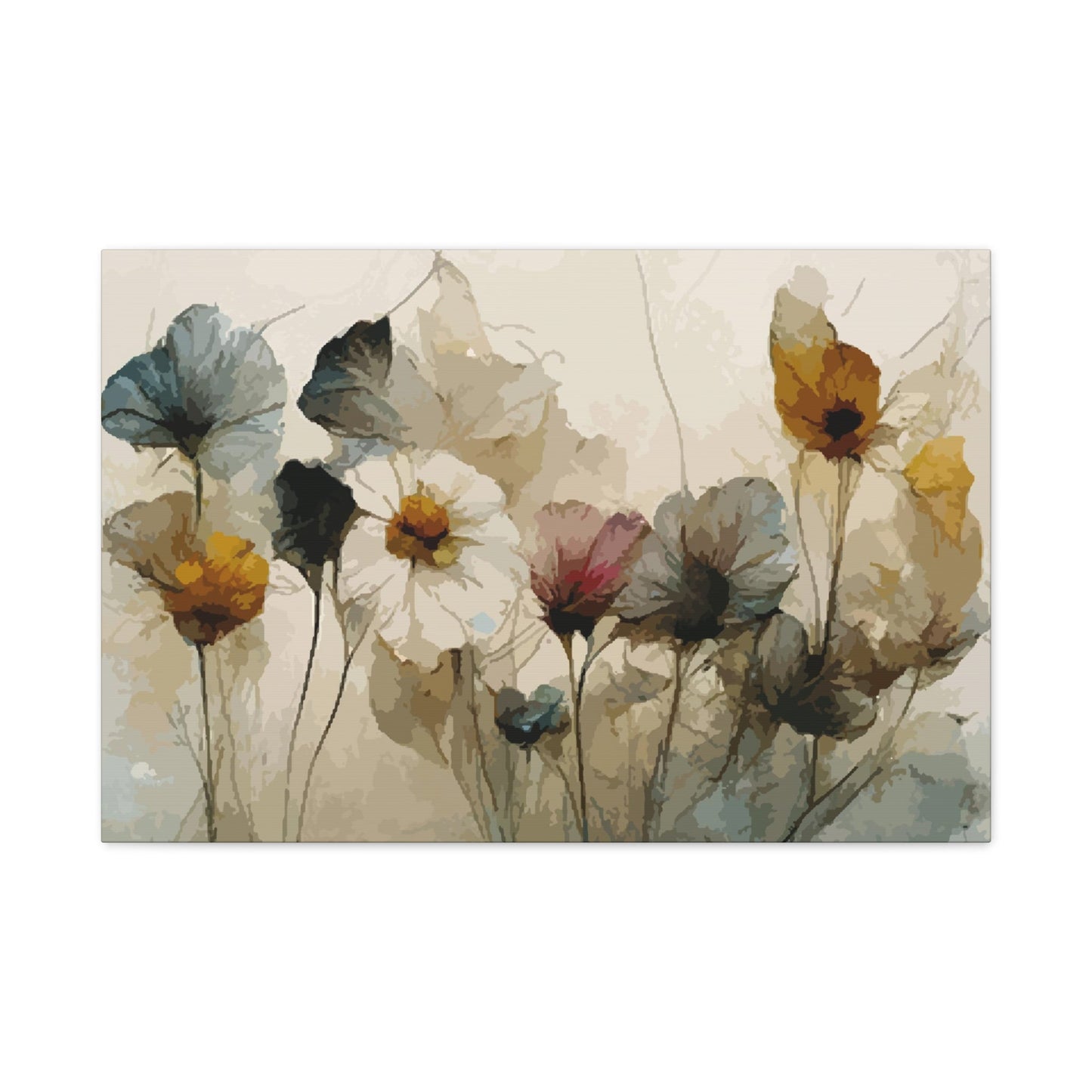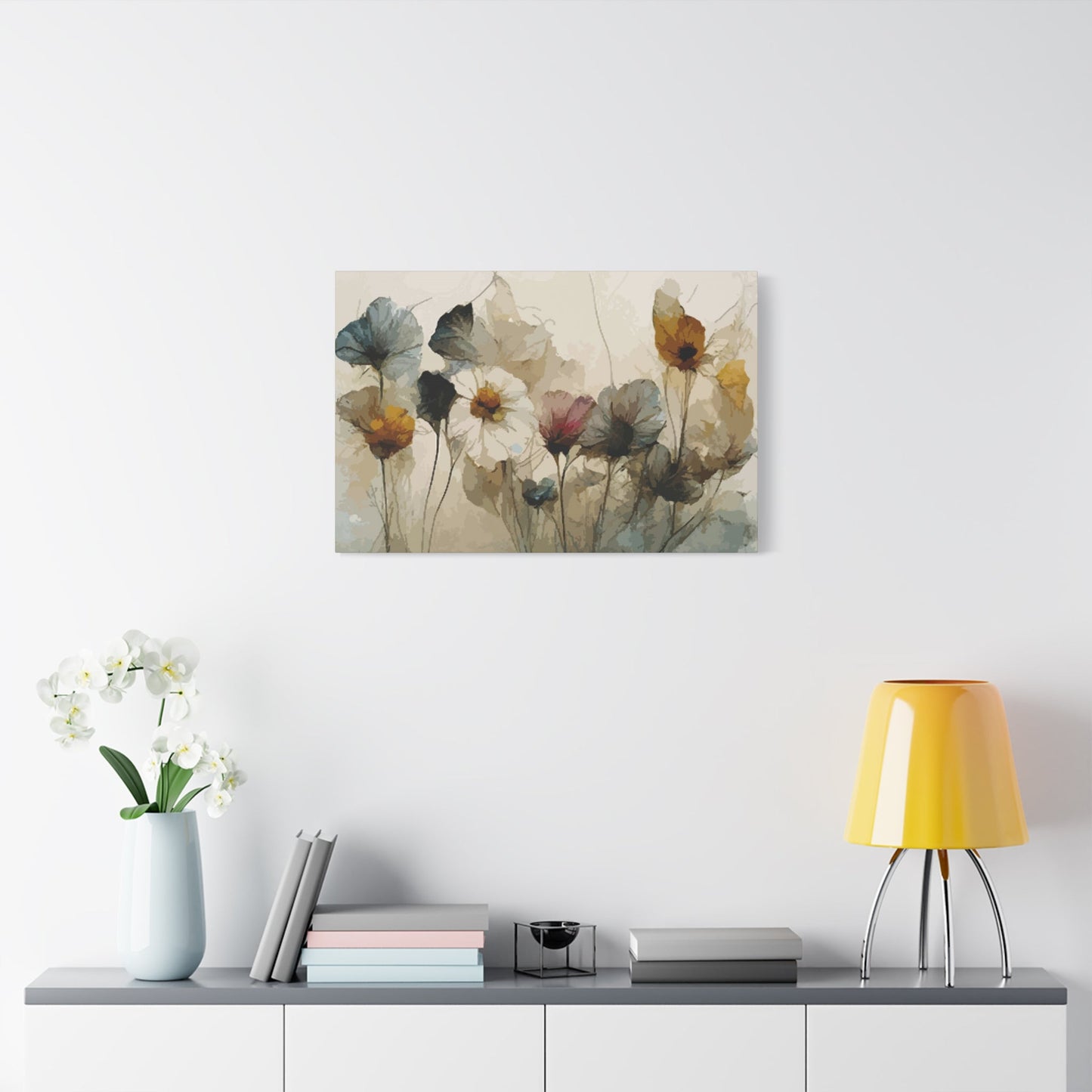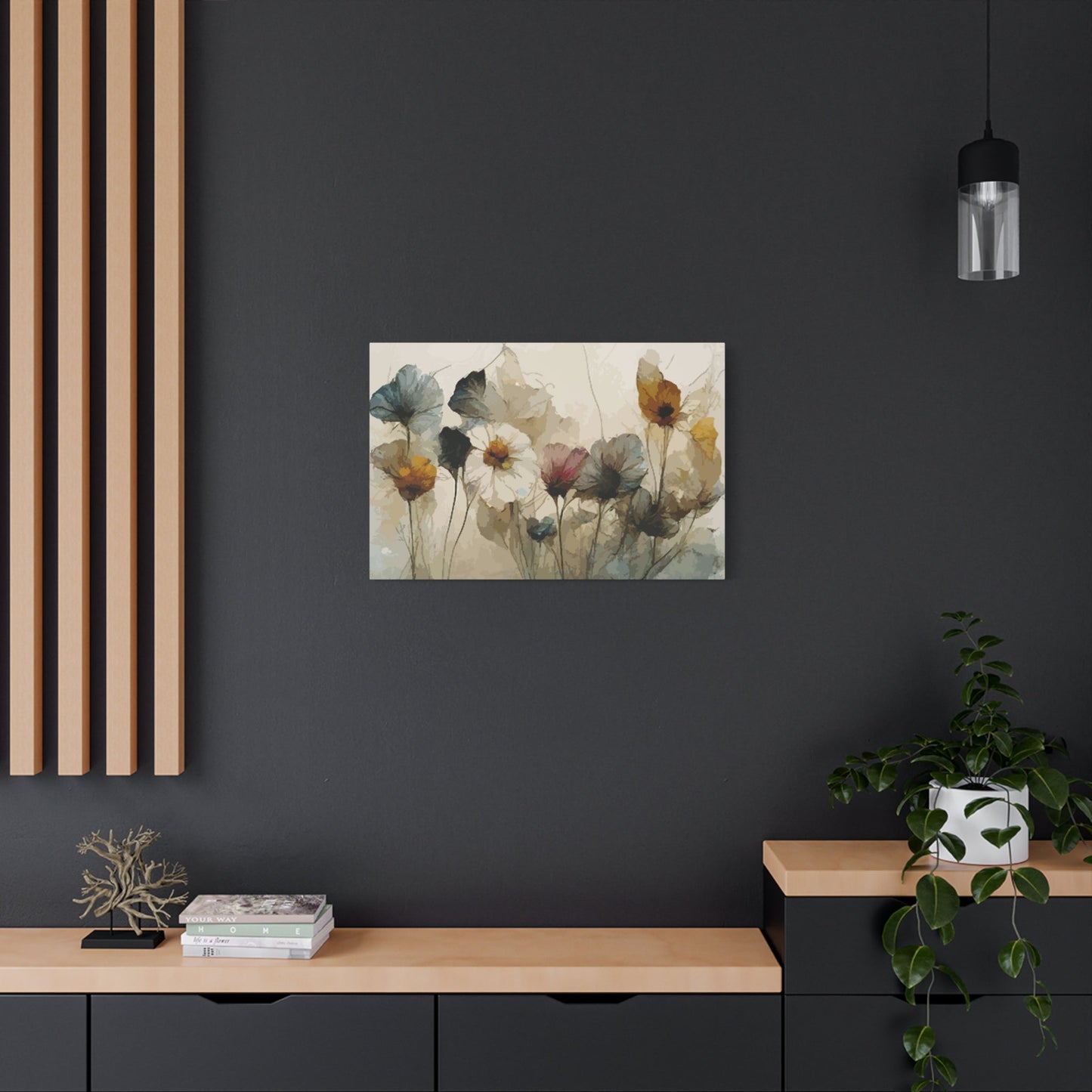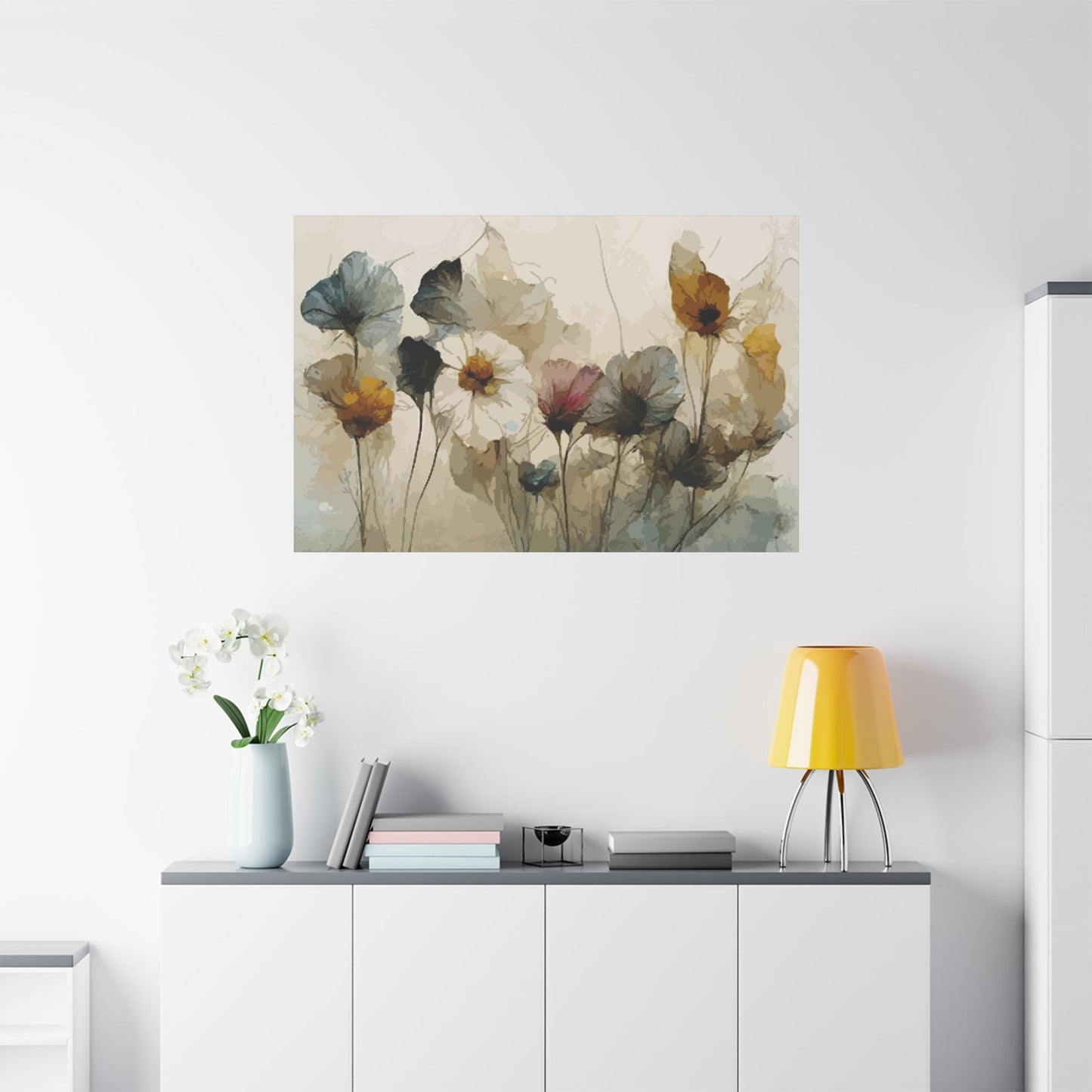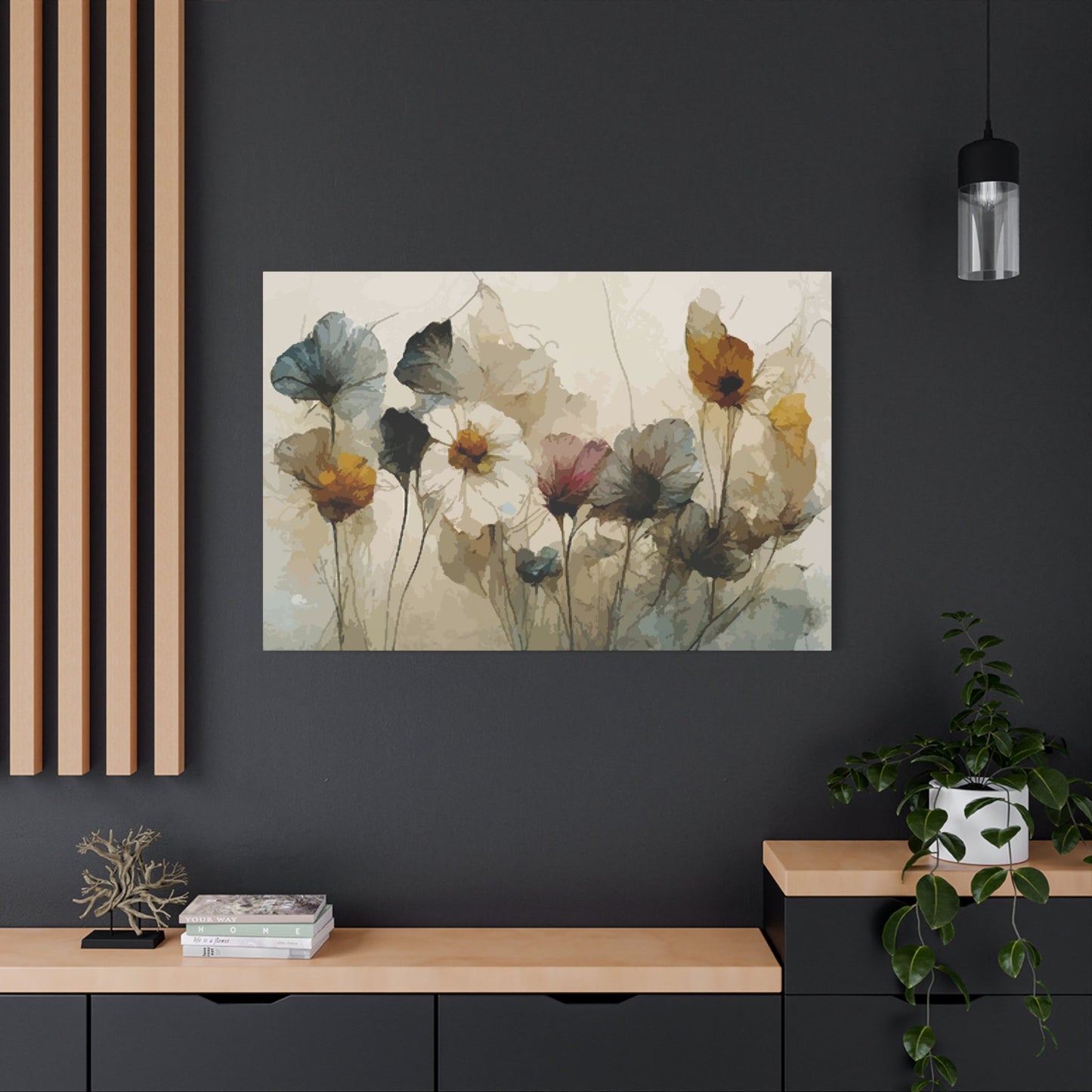Bloom Your Living Areas: Essential Flower Wall Art Ideas for Every Home
Decorating with botanical artwork has become one of the most cherished trends in contemporary home styling, bringing the beauty of nature indoors through carefully selected floral pieces. The appeal of flower-themed artwork extends far beyond simple decoration, as these pieces create emotional connections, evoke memories, and establish atmospheres that reflect personal taste and lifestyle preferences. Whether you prefer vibrant sunflower canvases, delicate watercolor roses, or abstract botanical interpretations, incorporating floral elements into your home decor transforms ordinary rooms into extraordinary sanctuaries.
The versatility of botanical artwork makes it suitable for every room, style preference, and budget consideration. From grand statement pieces that command attention to subtle accent prints that complement existing decor, flower-themed artwork offers endless possibilities for personal expression. These artistic elements work particularly well in creating focal points, adding color coordination, and establishing themes that carry throughout multiple rooms. The natural beauty captured in floral artwork resonates with people across different age groups, cultural backgrounds, and design preferences, making it a universally appealing choice for home decoration.
Modern homeowners increasingly recognize the psychological benefits of surrounding themselves with nature-inspired artwork. Research suggests that viewing floral imagery can reduce stress levels, improve mood, and create feelings of tranquility and well-being. This scientific backing, combined with the aesthetic appeal of botanical art, explains why flower-themed pieces continue to gain popularity among homeowners, renters, and professional decorators alike.
Revitalize Your Rooms with Botanical Artwork
Incorporating botanical elements into your home decor requires careful consideration of color schemes, room functionality, and existing furnishings to achieve harmonious results. The process begins with understanding how different floral motifs interact with various architectural features, lighting conditions, and furniture arrangements. Successful implementation involves selecting pieces that complement rather than compete with other decorative elements while maintaining visual balance throughout the room.
Color psychology plays a crucial role when selecting botanical artwork for different rooms. Warm-toned floral pieces featuring reds, oranges, and yellows create energizing environments perfect for social areas like living rooms and dining rooms. These vibrant selections stimulate conversation, encourage activity, and establish welcoming atmospheres for gatherings. Conversely, cool-toned botanical artwork incorporating blues, purples, and greens promotes relaxation and contemplation, making these pieces ideal for bedrooms, bathrooms, and quiet reading nooks.
The scale and proportion of botanical artwork significantly impact room aesthetics and functionality. Large-scale floral pieces work best in spacious rooms with high ceilings, where they can serve as dramatic focal points without overwhelming the environment. Medium-sized pieces offer versatility, working well in most standard rooms while providing substantial visual interest. Small botanical prints excel in creating gallery arrangements, filling awkward wall areas, and adding finishing touches to already decorated rooms.
Texture considerations become important when selecting botanical artwork, as different artistic mediums create varying visual and tactile experiences. Oil paintings offer rich, dimensional textures that catch light beautifully and create depth perception. Watercolor prints provide soft, dreamy qualities perfect for creating serene environments. Photography-based botanical artwork delivers sharp detail and realistic representation, while digital interpretations allow for creative color manipulation and contemporary styling approaches.
Placement strategies significantly influence how botanical artwork impacts room atmospheres. Eye-level positioning ensures optimal viewing and creates comfortable visual experiences for occupants. Grouping multiple smaller pieces creates dynamic arrangements that encourage visual exploration and conversation. Strategic lighting enhances the colors, textures, and details within botanical artwork, making these pieces appear more vibrant and engaging throughout different times of day.
Premier Botanical Prints for Room Enhancement
Selecting high-quality botanical prints requires understanding different artistic styles, printing techniques, and framing options available in today's market. Contemporary botanical artwork encompasses various approaches, from photorealistic representations to stylized interpretations that emphasize color, form, and emotional impact over literal accuracy. These diverse options allow homeowners to find pieces that align perfectly with their aesthetic preferences and decorating goals.
Photography-based botanical prints offer exceptional detail and color accuracy, capturing the intricate beauty of natural flowers in stunning clarity. These pieces work particularly well in modern and contemporary settings where clean lines and realistic imagery create sophisticated visual statements. High-resolution printing techniques ensure longevity and color stability, making photography-based prints excellent investment pieces for long-term decoration projects.
Watercolor botanical prints provide soft, romantic qualities that work beautifully in traditional, cottage, and shabby-chic decorating schemes. The translucent nature of watercolor techniques creates gentle color transitions and ethereal qualities that promote relaxation and contemplation. These prints often feature subtle color palettes that complement various existing color schemes without creating overwhelming visual competition.
Oil painting reproductions deliver rich colors and dimensional textures that add luxury and sophistication to any room. The layered paint techniques used in oil paintings create depth perception and visual interest that draws viewers closer for detailed examination. These pieces work particularly well in formal dining rooms, elegant living areas, and master bedrooms where sophisticated artwork enhances the overall ambiance.
Abstract botanical interpretations offer creative freedom and contemporary appeal, allowing artists to emphasize specific elements like color, form, or emotional impact while maintaining recognizable floral references. These pieces work excellently in modern homes where traditional realistic artwork might feel out of place. Abstract botanical artwork often features bold colors and innovative compositions that create striking focal points and conversation starters.
Digital botanical artwork represents the newest category in floral decoration, offering unlimited color options, creative effects, and customization possibilities. These pieces can be easily reproduced, resized, and modified to meet specific decorating requirements. Digital artwork often features enhanced colors and creative treatments that wouldn't be possible with traditional artistic mediums, making them perfect for contemporary and eclectic decorating approaches.
Contemporary Botanical Artwork for Stylish Homes
Modern botanical artwork reflects current design trends while maintaining timeless appeal through careful attention to color, composition, and subject matter selection. Contemporary floral pieces often feature clean lines, simplified forms, and strategic color placement that aligns with minimalist and modern decorating philosophies. These artistic approaches create sophisticated visual statements without overwhelming existing decor or architectural features.
Geometric botanical interpretations combine natural floral motifs with structured design elements, creating pieces that bridge traditional nature-inspired artwork with contemporary geometric trends. These hybrid approaches appeal to homeowners who appreciate natural beauty but prefer organized, systematic visual presentations. Geometric botanical pieces often feature repeated patterns, symmetrical compositions, and controlled color palettes that work well in modern homes with clean architectural lines.
Oversized botanical photography creates dramatic focal points that command attention while celebrating the intricate beauty of natural flowers. Large-scale floral photography works particularly well in minimalist settings where single statement pieces can define entire room aesthetics. These pieces often feature close-up perspectives that reveal texture details and color variations invisible to casual observation, creating engaging visual experiences that reward closer examination.
Monochromatic botanical artwork offers sophisticated alternatives to colorful floral pieces while maintaining natural beauty and organic appeal. Black and white botanical photography creates timeless elegance that works well with various color schemes and decorating styles. Sepia-toned pieces provide vintage character while maintaining contemporary relevance. Single-color interpretations allow homeowners to introduce botanical elements without disrupting carefully planned color coordination.
Mixed media botanical artwork combines different artistic techniques and materials to create unique textural experiences and visual interest. These innovative pieces might incorporate painting, photography, collage elements, and dimensional materials to create artwork that engages multiple senses. Mixed media approaches allow artists to explore creative possibilities beyond traditional limitations while maintaining botanical themes and natural appeal.
Seasonal botanical collections offer opportunities to rotate artwork throughout the year, keeping room decor fresh and aligned with changing natural cycles. Spring collections might feature delicate cherry blossoms and fresh green foliage, while summer pieces could showcase bold sunflowers and vibrant garden scenes. Fall botanical artwork might emphasize warm colors and mature blooms, while winter collections could focus on evergreen elements and subtle, muted tones.
Striking Flower Compositions: Creating Dramatic Visual Impact
Bold botanical artwork serves as powerful decorating tools capable of transforming ordinary rooms into extraordinary environments through strategic color usage, dramatic composition, and compelling subject matter selection. These statement pieces work best when given adequate visual breathing room and appropriate lighting to showcase their full impact potential. Successful implementation requires careful consideration of existing decor elements to ensure harmonious integration rather than visual competition.
Large-scale peony prints create luxurious focal points with their full, layered petals and rich color variations. These dramatic flowers photograph beautifully and translate well into various artistic mediums, from oil painting reproductions to high-resolution photography prints. Peony artwork works particularly well in master bedrooms and formal living areas where sophisticated beauty enhances overall ambiance. The natural layering of peony petals creates visual depth that engages viewers and adds dimensional interest to flat wall surfaces.
Sunflower artwork brings instant warmth and cheerfulness to any environment through bright yellow petals and distinctive circular forms. Large sunflower pieces work excellently as kitchen artwork, breakfast nook decorations, and family room focal points where their optimistic energy encourages positive moods and social interaction. The bold, simple forms of sunflowers translate well into various artistic styles, from realistic photography to stylized interpretations and abstract representations.
Rose artwork offers timeless elegance and romantic appeal suitable for various decorating styles and room purposes. Large-scale rose prints work beautifully in master bedrooms, dining rooms, and elegant living areas where their classic beauty creates sophisticated atmospheres. The wide variety of rose colors available in artwork allows for precise color coordination with existing decor elements while maintaining universal appeal and recognition.
Tropical flower artwork featuring hibiscus, bird of paradise, and other exotic blooms creates dramatic visual statements with vibrant colors and unusual forms. These pieces work particularly well in contemporary homes, sunrooms, and areas where homeowners want to establish vacation-like atmospheres. Tropical botanical artwork often features bold color contrasts and striking compositions that command attention while evoking feelings of relaxation and escape.
Wildflower compositions create casual, natural beauty through diverse color combinations and organic arrangements. Large wildflower prints work well in country-style homes, casual family rooms, and areas where relaxed, comfortable atmospheres are desired. The informal nature of wildflower arrangements provides visual interest without demanding formal presentation or careful coordination with existing decor elements.
Orchid artwork delivers sophisticated elegance through graceful forms and subtle color variations. Large orchid prints work beautifully in contemporary homes, spa-like bathrooms, and elegant bedrooms where their refined beauty creates calming, luxurious atmospheres. The architectural qualities of orchid stems and blooms complement modern furniture and clean decorating lines while adding organic softness to structured environments.
Gentle and Understated: Minimalist Botanical Decor
Minimalist botanical artwork emphasizes simplicity, clean lines, and restrained color palettes to create calming visual experiences that complement rather than dominate room environments. These subtle pieces work particularly well in contemporary homes where visual clutter reduction and peaceful atmospheres are primary decorating goals. Successful minimalist botanical decoration requires careful attention to proportion, placement, and integration with existing architectural features.
Single stem botanical prints create elegant simplicity through focused composition and minimal visual elements. These pieces work excellently in bedrooms, bathrooms, and quiet reading areas where peaceful atmospheres are desired. The clean presentation of individual flowers or branches allows viewers to appreciate natural beauty without visual overwhelming or distraction from other room elements. Single stem artwork often features generous white or neutral background areas that contribute to overall room serenity.
Watercolor botanical prints with soft, muted colors provide gentle visual interest without creating dramatic focal points or demanding attention. These subtle pieces work well in nurseries, guest bedrooms, and areas where calming influences are important. The translucent qualities of watercolor techniques create gentle color transitions and ethereal effects that promote relaxation and contemplation. Soft botanical watercolors complement various neutral decorating schemes while adding natural beauty and organic appeal.
Line drawing botanical artwork reduces natural forms to essential elements, creating sophisticated simplicity that appeals to contemporary sensibilities. These minimalist interpretations focus on form and structure rather than color and detail, making them perfect for homes where visual clarity and uncluttered presentations are priorities. Black line drawings on white backgrounds create timeless elegance that works with various color schemes and decorating styles.
Pressed flower artwork preserved under glass creates delicate, natural beauty through actual botanical specimens rather than artistic interpretations. These pieces offer authentic textures, subtle colors, and scientific accuracy that appeals to nature enthusiasts and educational contexts. Pressed flower collections work well in studies, libraries, and areas where natural history and botanical accuracy are appreciated. The flat presentation of pressed specimens complements minimalist decorating approaches while maintaining genuine natural connection.
Negative space botanical compositions emphasize the areas around flowers rather than the flowers themselves, creating sophisticated visual statements through strategic omission and careful composition. These artistic approaches challenge traditional presentation methods while maintaining botanical recognition and natural appeal. Negative space techniques work particularly well in contemporary homes where innovative artistic approaches are appreciated and visual sophistication is valued.
Monochromatic botanical series featuring various shades of single colors create cohesive, calming presentations that work well in minimalist decorating schemes. These coordinated collections might feature different flowers rendered in various tones of blue, green, or neutral colors to create visual harmony while maintaining botanical variety. Monochromatic approaches allow for larger artwork collections without visual overwhelming or color coordination challenges.
Seasonal Botanical Artwork for Year-Round Beauty
Seasonal botanical collections provide opportunities to refresh home decor throughout the year while maintaining consistent natural themes and botanical connections. These rotating displays keep rooms feeling current and aligned with natural cycles while allowing homeowners to enjoy variety without permanent commitments to specific pieces. Successful seasonal decoration requires storage solutions and rotation schedules that make changing artwork convenient and enjoyable.
Spring botanical artwork celebrates renewal and fresh beginnings through delicate blossoms, soft colors, and emerging foliage. Cherry blossom prints create romantic beauty perfect for bedrooms and elegant living areas. Tulip artwork brings cheerful colors and simple forms ideal for kitchens and breakfast areas. Daffodil prints symbolize hope and optimism, making them perfect for home offices and creative areas where inspiration is important. Spring collections often feature pastel colors and gentle compositions that reflect the season's soft, hopeful energy.
Summer botanical artwork embraces abundance and vibrancy through full blooms, rich colors, and lush foliage. Sunflower prints create warm, welcoming atmospheres perfect for family rooms and social areas. Garden rose artwork captures peak beauty and sophisticated elegance suitable for formal dining rooms and master bedrooms. Lavender prints provide calming purple tones ideal for bathrooms and relaxation areas. Summer collections typically feature bold colors and full compositions that reflect the season's energetic abundance.
Autumn botanical artwork celebrates maturity and richness through warm colors, seed pods, and changing foliage. Maple leaf prints create cozy atmospheres perfect for family rooms and reading nooks. Chrysanthemum artwork provides rich colors and full forms ideal for dining rooms and social areas. Wheat grass prints offer natural textures and neutral tones suitable for kitchens and casual eating areas. Fall collections often emphasize earth tones and harvest themes that create comfortable, grounding environments.
Winter botanical artwork finds beauty in dormancy and structure through bare branches, evergreen elements, and subtle colors. Pine branch prints create fresh, clean atmospheres perfect for entryways and guest areas. Holly artwork provides traditional holiday connections while maintaining year-round appeal. Birch tree prints offer elegant simplicity ideal for contemporary homes and minimalist decorating approaches. Winter collections typically feature muted colors and structural elements that complement the season's quiet, contemplative character.
Transitional botanical pieces work effectively across multiple seasons, reducing storage requirements and decoration maintenance. Evergreen artwork maintains appeal throughout the year while providing consistent color and natural connection. Dried flower arrangements captured in artwork offer neutral colors and interesting textures that complement various seasonal decorating approaches. Abstract botanical interpretations focus on universal forms and colors that transcend specific seasonal associations while maintaining natural beauty and organic appeal.
Romantic Botanical Prints for Bedroom Environments
Bedroom botanical artwork requires careful attention to color psychology, romantic appeal, and relaxation promotion to create environments conducive to rest, intimacy, and personal reflection. These pieces should enhance rather than stimulate, providing gentle beauty that supports the bedroom's primary functions while reflecting personal taste and relationship dynamics. Successful bedroom botanical decoration balances aesthetic appeal with functional considerations specific to sleep and relaxation environments.
Rose artwork creates classic romantic appeal through timeless beauty, soft colors, and universal symbolic associations with love and affection. Large rose prints work beautifully as headboard alternatives or accent pieces that establish romantic themes without overwhelming bedroom environments. The variety of rose colors allows for precise coordination with existing bedding, window treatments, and furniture while maintaining romantic significance. Vintage-style rose prints add nostalgic charm perfect for traditional and cottage-style bedrooms.
Peony prints offer luxurious beauty through full, layered blooms and sophisticated color options ranging from soft pastels to rich, dramatic tones. These elegant flowers create focal points that enhance bedroom sophistication while maintaining feminine appeal. Large peony artwork works particularly well in master bedrooms where luxury and elegance are decorating priorities. The organic, flowing forms of peonies provide visual softness that balances structured bedroom furniture and architectural elements.
Cherry blossom artwork brings delicate beauty and cultural significance to bedroom environments through graceful branches and soft pink petals. These pieces create serene, contemplative atmospheres perfect for relaxation and meditation. Cherry blossom prints work well in contemporary bedrooms where clean lines and minimalist approaches are preferred. The ephemeral nature of cherry blossoms adds poetic meaning to bedroom decoration while providing gentle color and organic beauty.
Lavender artwork promotes relaxation through both visual appeal and aromatic associations, making these pieces particularly appropriate for bedroom environments. Purple lavender fields create calming focal points while supporting the bedroom's restorative functions. The vertical growth pattern of lavender translates well into tall, narrow prints perfect for areas beside beds or dressers. Lavender artwork often features soothing colors that complement various neutral bedroom color schemes.
Watercolor botanical bedroom collections create cohesive romantic themes through coordinated color palettes and artistic techniques. These soft, dreamy pieces work well in groupings that create gallery-style presentations above beds or dressers. The translucent qualities of watercolor techniques provide gentle visual interest without creating harsh contrasts or demanding attention. Watercolor botanical sets often include various flowers rendered in coordinating colors that tie together bedroom decor elements.
Abstract romantic botanical artwork offers contemporary alternatives to traditional flower prints while maintaining feminine appeal and bedroom appropriateness. These pieces might emphasize color relationships, emotional content, or symbolic meaning rather than realistic representation. Abstract approaches work well in modern bedrooms where traditional artwork might feel inconsistent with contemporary furnishing and architectural choices. Creative interpretations allow for personalized expression while maintaining botanical themes and romantic associations.
Energize Work Environments with Botanical Canvas Art
Office botanical artwork must balance professional appropriateness with mood enhancement, productivity support, and stress reduction to create work environments that promote both efficiency and well-being. These pieces should provide visual relief from screen time and paperwork while maintaining sophisticated presentation suitable for professional settings. Successful office botanical decoration considers lighting conditions, viewing distances, and psychological impacts on work performance and job satisfaction.
Green botanical artwork promotes concentration and reduces eye strain through calming color associations and natural imagery. Fern prints create fresh, clean atmospheres perfect for contemporary offices and home workspaces. Eucalyptus artwork provides sophisticated beauty through silver-green foliage and organic forms. Moss and leaf compositions offer textural interest and natural connections that counterbalance technological work environments. Green botanical pieces work particularly well in offices with limited natural light or window access.
Energizing flower artwork featuring bright colors and bold forms can stimulate creativity and motivation in appropriate office settings. Sunflower prints create optimistic atmospheres perfect for creative workspaces and collaborative areas. Gerbera daisy artwork provides cheerful colors and simple forms ideal for home offices and studio environments. Bird of paradise prints offer tropical energy suitable for creative industries and informal work settings. Bright botanical artwork should be balanced with neutral elements to avoid visual overwhelming during long work sessions.
Minimalist botanical office artwork maintains professional appearance while providing natural beauty and stress relief. Single stem prints create elegant focal points without dominating office environments or conflicting with business presentations. Line drawing botanical artwork offers sophisticated simplicity perfect for formal office settings and client meeting areas. Black and white botanical photography provides timeless elegance that complements various office color schemes and furniture styles.
Seasonal botanical rotation in office settings provides variety and maintains visual interest throughout the year while supporting productivity and morale. Spring botanical artwork can energize and inspire after long winter months. Summer pieces might celebrate abundance and growth. Fall artwork could provide warmth and comfort during challenging work periods. Winter botanical elements offer calm stability during busy year-end periods. Seasonal changes prevent office artwork from becoming invisible through familiarity.
Productivity-enhancing botanical artwork should be positioned to provide visual breaks during concentrated work periods while remaining visible from primary work positions. Pieces placed at eye level when looking up from computers provide optimal stress relief and eye rest. Botanical artwork positioned behind seating areas creates pleasant backgrounds for video conferences and client meetings. Strategic placement ensures maximum benefit from natural imagery while maintaining professional presentation standards.
Combining Botanical Prints with Alternative Artwork
Successfully mixing botanical artwork with other art forms requires understanding visual relationships, color coordination, and thematic connections that create cohesive presentations rather than competing collections. These combination approaches allow homeowners to enjoy botanical beauty while incorporating diverse artistic styles, personal collections, and varied subject matters. Effective mixing strategies consider scale, color, and placement to achieve balanced, interesting displays.
Photography and botanical artwork combinations create engaging contrasts between realistic representation and artistic interpretation. Black and white photography pairs beautifully with colorful botanical prints, creating sophisticated presentations that showcase both artistic mediums effectively. Landscape photography combined with botanical close-ups provides varying perspectives on natural beauty while maintaining thematic consistency. Portrait photography can be balanced with botanical pieces through careful color coordination and proportional consideration.
Abstract artwork and botanical prints create interesting dialogues between representational and non-representational artistic approaches. Bold abstract pieces can be grounded by realistic botanical artwork, while botanical elements can add natural connection to purely abstract collections. Color relationships become crucial in these combinations, with botanical pieces often providing the color foundation that ties abstract elements into cohesive presentations. Scale variation prevents competition between different artistic styles.
Vintage and contemporary botanical artwork mixing creates dynamic presentations that celebrate both historical and current artistic approaches. Antique botanical illustrations paired with modern photography creates temporal depth and educational interest. Contemporary abstract botanical artwork combined with traditional pressed flower collections provides generational dialogue within single presentations. These temporal combinations work particularly well in eclectic decorating schemes that embrace variety and historical references.
Cultural artwork and botanical elements create globally inspired presentations that celebrate diverse artistic traditions while maintaining natural connections. Asian botanical artwork combined with Western landscape pieces creates cross-cultural dialogue. Tropical botanical prints paired with indigenous artwork celebrates regional natural beauty. These cultural combinations require sensitivity and understanding of artistic traditions while creating educational and inspiring displays.
Geometric artwork and organic botanical forms create compelling contrasts that highlight the differences between structured human creation and natural organic beauty. Clean geometric prints balanced by flowing botanical elements provide visual tension that engages viewers and creates dynamic presentations. These combinations work particularly well in contemporary homes where both artistic approaches align with modern decorating philosophies while providing variety and visual interest.
Children's artwork combined with botanical elements creates family-friendly presentations that celebrate both human creativity and natural beauty. Kid's drawings paired with professional botanical artwork creates encouraging environments that value artistic expression at all levels. These combinations work well in family areas, playrooms, and educational settings where inspiration and creativity are priorities.
Trending Colors for Botanical Artwork in 2025
Current color trends in botanical artwork reflect broader design movements toward natural materials, sustainable living, and wellness-focused environments while incorporating technological influences and global cultural appreciation. These color directions help homeowners make informed choices that align with contemporary design sensibilities while maintaining timeless appeal and personal preference satisfaction. Understanding trend directions assists in selecting artwork that feels current without appearing dated in future years.
Earth tone botanical artwork featuring warm browns, rich terracottas, and golden yellows creates grounding connections to natural materials and sustainable living principles. These colors work particularly well with natural wood furnishings, stone elements, and organic textiles that characterize contemporary eco-conscious decorating approaches. Sunflower prints in golden yellow tones, autumn leaf artwork in rich browns, and desert flower pieces in warm terracotta shades reflect these trending color preferences while providing natural beauty and organic connection.
Sage green botanical artwork aligns with the wellness movement and biophilic design principles that emphasize human connection to nature. This sophisticated green tone works beautifully with various neutral color schemes while providing calming influences associated with health and healing. Eucalyptus artwork, fern prints, and herb garden pieces naturally incorporate sage green tones while supporting trend-conscious decorating approaches. The versatility of sage green allows coordination with both warm and cool accent colors.
Digital blue botanical artwork reflects technological influences and contemporary color preferences while maintaining natural subject matter. This modern blue tone works well in contemporary homes with smart technology integration and modern architectural features. Hydrangea prints featuring digital blue tones, morning glory artwork with enhanced blue colors, and abstract botanical interpretations incorporating digital color processing align with these technological trend influences while preserving botanical beauty and natural appeal.
Coral pink botanical artwork combines feminine appeal with contemporary color sophistication, creating pieces that feel both current and timelessly beautiful. This warm pink tone works well in various decorating styles while providing optimistic energy and romantic appeal. Peony artwork in coral tones, cherry blossom prints with enhanced pink colors, and rose compositions featuring coral highlights reflect these trending color preferences while maintaining classic botanical subject matter.
Lavender purple botanical artwork supports wellness trends and meditation practices while providing sophisticated color options for contemporary homes. This calming purple tone works beautifully in bedrooms, bathrooms, and relaxation areas where stress reduction and tranquility are priorities. Lavender field prints, wisteria artwork, and abstract botanical interpretations in purple tones align with wellness-focused decorating approaches while providing natural beauty and aromatic associations.
Monochromatic trending approaches feature single colors in various tones and saturations, creating sophisticated presentations that align with minimalist design philosophies. These single-color botanical collections might feature different flowers rendered in various shades of trending colors, creating cohesive presentations that feel contemporary while maintaining botanical variety and natural appeal.
Transform Your Living Areas into Garden Sanctuaries
Creating garden-like atmospheres indoors through strategic botanical artwork selection and placement transforms ordinary rooms into nature-inspired retreats that promote well-being, relaxation, and connection to natural cycles. These comprehensive decorating approaches consider multiple elements including artwork selection, color coordination, lighting enhancement, and complementary decorative elements that support garden themes while maintaining indoor comfort and functionality.
Large-scale garden scene artwork creates immersive environments that transport viewers into lush botanical settings through detailed composition and realistic representation. Garden pathway prints invite visual exploration while providing depth and perspective that expands perceived room dimensions. Flower garden collections featuring multiple bloom varieties create abundant, joyful atmospheres perfect for social areas and family gathering rooms. These comprehensive garden scenes work particularly well in rooms with adequate wall areas to display their full impact and detail.
Layered botanical artwork arrangements create dimensional garden effects through strategic placement at varying heights and depths. Foreground flower prints combined with background foliage artwork creates visual depth that mimics natural garden experiences. Tree canopy artwork positioned above lower flower prints establishes natural layering relationships that feel authentic and engaging. These layered approaches work well in rooms with multiple wall surfaces and varied viewing angles.
Seasonal garden artwork rotation maintains year-round garden connections while reflecting natural growth cycles and seasonal beauty changes. Spring garden scenes featuring emerging bulbs and fresh foliage, summer displays showcasing peak bloom abundance, autumn presentations emphasizing harvest themes and changing colors, and winter garden artwork highlighting structural beauty and dormant season appeal. These rotating displays keep garden themes feeling current and connected to outdoor natural cycles.
Herb garden artwork brings functional beauty and culinary connections into kitchen and dining areas through representations of useful plants that combine aesthetic appeal with practical associations. Basil, rosemary, thyme, and sage artwork creates sophisticated botanical presentations while connecting to food preparation and culinary creativity. These pieces work particularly well in kitchens, dining areas, and breakfast nooks where food themes are appropriate and welcomed.
Water feature botanical artwork incorporating pond plants, stream-side flowers, and aquatic gardens creates cooling, calming effects that promote relaxation and contemplation. Water lily prints provide serene beauty perfect for bathrooms and meditation areas. Stream-side wildflower artwork combines water elements with botanical beauty for dynamic natural presentations. These water-connected pieces work well in areas where moisture and humidity are present or where cooling visual effects are desired.
Cottage garden artwork creates informal, abundant beauty through mixed flower presentations that emphasize casual arrangement and natural growth patterns. These pieces feature varied flowers in informal arrangements that feel spontaneous and unstudied. Cottage garden artwork works particularly well in country-style homes, casual family areas, and rooms where relaxed, comfortable atmospheres are preferred over formal presentation styles.
Compact Areas: Maximizing Impact with Small Botanical Prints
Small botanical artwork offers versatile decorating solutions for compact living situations, awkward wall areas, and budget-conscious decorating approaches while maintaining significant visual impact and natural beauty connections. These smaller pieces require strategic selection, careful placement, and creative arrangement techniques to achieve maximum decorating effectiveness without overwhelming limited visual real estate or creating cluttered presentations.
Gallery wall botanical arrangements combine multiple small prints to create substantial visual impact while maintaining individual piece affordability and flexibility. These coordinated collections might feature various flowers rendered in consistent artistic styles, seasonal progressions showing different growth stages, or color-coordinated pieces that create cohesive presentations. Gallery walls work particularly well in narrow hallways, above furniture groupings, and in rooms where single large pieces would feel overwhelming or disproportionate.
Corner botanical arrangements utilize often-overlooked wall areas through strategic small print placement that creates visual interest in transitional areas. These corner presentations might feature ascending arrangements that follow stairway lines, clustered groupings that create cozy reading nook focal points, or linear arrangements that emphasize architectural features. Corner placements work well for small prints because they don't compete with main room focal points while adding finishing touches to overall room presentations.
Bathroom botanical artwork requires moisture-resistant materials and appropriate subject matter while maximizing limited wall areas through careful selection and placement. Small botanical prints work particularly well in bathrooms where humidity concerns limit artwork options and wall dimensions require compact presentations. Herb garden prints, small flower studies, and moisture-loving plant artwork create appropriate bathroom botanical connections while withstanding environmental challenges.
Kitchen botanical collections featuring culinary plants, herb gardens, and food-related flowers create functional beauty that connects to cooking and dining activities. Small prints work well in kitchens where wall areas are limited by cabinets, appliances, and functional requirements. These pieces might feature herbs, vegetables in bloom, or fruit tree blossoms that connect botanical beauty to food preparation and culinary creativity while fitting available display areas.
Bedroom accent botanical artwork provides gentle beauty and personal expression without overwhelming sleep-focused environments. Small botanical prints work well as bedside accent pieces, dresser top arrangements, or closet area decorations where full-sized artwork might feel excessive. These intimate pieces create personal connections to nature while maintaining bedroom tranquility and rest-focused atmospheres.
Entryway botanical arrangements create welcoming first impressions while working within limited wall areas typical of entry halls and foyers. Small botanical prints arranged in ascending patterns, seasonal groupings, or family collections create engaging presentations that welcome guests while introducing home decorating themes. These entry presentations set decorating expectations while providing natural beauty connections that extend throughout home environments.
Botanical Artwork Concepts for Gallery Arrangements
Gallery-style botanical presentations create sophisticated artistic statements through coordinated collections that showcase botanical beauty while demonstrating curatorial expertise and design sophistication. These arrangements require careful planning, consistent artistic approaches, and strategic placement to achieve museum-quality presentations within residential settings. Successful gallery arrangements balance variety with cohesion while maintaining visual interest and educational value.
Scientific botanical illustration collections create educational gallery presentations that combine artistic beauty with botanical accuracy and historical significance. These might feature vintage botanical prints from famous naturalist expeditions, contemporary scientific illustrations, or reproduction collections that showcase botanical discovery and documentation. Scientific collections work particularly well in studies, libraries, and educational areas where learning and discovery are valued and encouraged.
Artist series botanical collections showcase individual artists' approaches to botanical subject matter while creating cohesive presentations through consistent artistic style and vision. These might feature single artists' interpretations of different flowers, seasonal progressions by preferred artists, or comparative presentations showing multiple artists' approaches to similar subject matter. Artist series collections demonstrate artistic appreciation while providing consistent visual approaches that tie gallery presentations together.
Color progression botanical galleries arrange pieces according to color relationships, creating visual journeys through botanical rainbow presentations or seasonal color transitions. These arrangements might progress from cool to warm colors, showcase single color variations, or demonstrate seasonal color changes through botanical subject matter. Color progression galleries create engaging visual experiences while showcasing botanical diversity and natural color relationships.
Size variation botanical galleries combine different print sizes to create dynamic presentations that maintain botanical themes while providing visual rhythm and movement. These arrangements might feature large central pieces surrounded by smaller coordinating prints, ascending size arrangements that create movement, or clustered groupings that combine various sizes for complex visual interest. Size variation prevents gallery arrangements from appearing static while maintaining botanical consistency.
Geographic botanical collections showcase plants and flowers from specific regions, creating educational presentations that combine botanical beauty with cultural and geographic learning. These might feature Mediterranean herbs, tropical flowers, desert blooms, or regional wildflower collections that demonstrate biodiversity while creating cohesive artistic presentations. Geographic collections work well in educational settings and homes where travel and cultural appreciation are priorities.
Seasonal botanical progressions create dynamic gallery presentations that change throughout the year while maintaining consistent placement and framing approaches. These rotating displays might showcase spring emergence, summer abundance, autumn harvest, and winter dormancy through coordinated artistic presentations that reflect natural cycles while keeping gallery arrangements fresh and seasonally appropriate.
Conclusion
Flower wall art is more than just a decorative choice—it’s a timeless way to bring color, emotion, and vitality into your living space. As explored in Bloom Your Living Areas: Essential Flower Wall Art Ideas for Every Home, floral-themed artwork has the unique power to brighten interiors, elevate moods, and reflect personal style. Whether you prefer bold botanicals, soft watercolors, abstract florals, or vintage botanical prints, there’s a perfect floral piece for every taste and every room.
What makes flower wall art so enduring is its universal appeal. Flowers symbolize life, growth, renewal, and beauty—values that resonate deeply in the spaces where we live, relax, and gather. From tranquil lilies in a calm bedroom to vibrant sunflowers in a cozy kitchen, floral prints create visual harmony and bring a touch of the outdoors inside, no matter the season.
Additionally, the variety of flower wall art styles means endless possibilities for home décor. You can go minimalist with monochrome line art, embrace luxury with rich oil paintings, or create a playful vibe with colorful pop-art blooms. Whether you’re designing a statement wall or filling a quiet corner, floral art provides the flexibility to either stand out or blend in—depending on your desired effect.
Flower wall art also allows for creative expression. Mix and match different sizes, frames, and flower types to reflect your personality or the energy of the space. Create a gallery wall that evolves with the seasons or highlight a single oversized bloom for maximum impact. No matter how you arrange it, flower art brings a sense of life and intention to your interiors.
In essence, incorporating floral wall art into your home is an easy yet powerful way to refresh your surroundings. It turns blank walls into expressions of natural beauty and makes every room feel a little more alive. Whether you’re updating your décor or starting fresh, flower wall art is a foundational element that brings charm, character, and comfort to every space.













